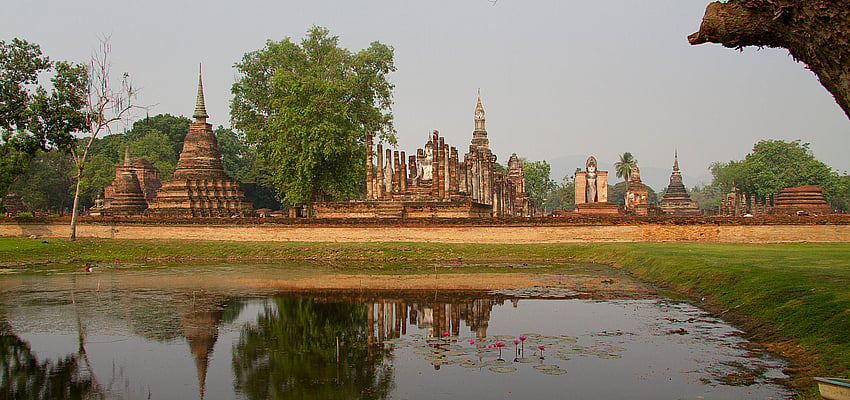


Until 1939, Thailand was known as the Kingdom of Siam.
The Kingdom of Siam has its origins in the sixth century BC. Buddhism, on the other hand, was introduced to the kingdom in 638 AD. Not until the thirteenth century did the Thai people found their first independent state, at Sukhothai. The Kingdom of Sukhothai managed to prevail against the Khmers, and this period is considered to be the Golden Age of Thai history. In 1555, the , Ayuthia fell to the Burmese. They were expelled from the city twelve years later, but took Ayuthia for a second time in 1767. The Burmese were subsequently vanquished in 1769 by General Phayatak, who was of Chinese origin, and who went to found a new capital at Bangkok - which is a must-see during any trip - in 1772.
In 1855, the Kingdom of Siam was opened to trade with England, followed by France in 1858, Germany in 1862, and Austria in 1868. King Mongkut implemented a number of social and economic reforms. His son, Chulalongkorn abolished slavery and built relations with England: he had been brought up by an English governess, and the Thai ruler established personal relationships with foreign diplomats, even going as far as having his children raised in England.

The Franco-Siamese treaty of October 3rd, 1893, forced the Siamese to cede all its territory on the eastern bank of the Mekong, with France becoming the colonial power there. The French and the English then divided the territories of the Menam Basin amongst themselves. The land to the west, particularly the Malay Peninsula, was acknowledged to be English territory, and the land to the east, i.e., the Mekong Basin fell under French control. Ultimately only a small part of Siam remained independent.
The Kingdom of Siam became Thailand under Plaek Phibunsongkhram, who was prime minister from 1938 to 1944. After the Second World War, Phibunsongkhram and some of his acolytes were accused of war crimes, but were acquitted. Since 1973, the history of Thailand has been marked by alternating shifts in power between military and civil authorities. The Thai Rak Thai Party, led by Prime Minister Thaksin Shinawatra governed the country from 2001 to 2006, before being removed from power by a military coup.
In 2007, the Thai people approved the New Constitution following the first referendum in the country's history. The People's Power Party won the elections that took place that year, but Thailand remained highly unstable and significant protests broke out in 2010. In 2011, Thaksin Shinawatra's sister became prime minister. Two years later, she was accused of being a political puppet of her brother. She held planned parliamentary elections in February, 2014, but these were invalidated the following month.